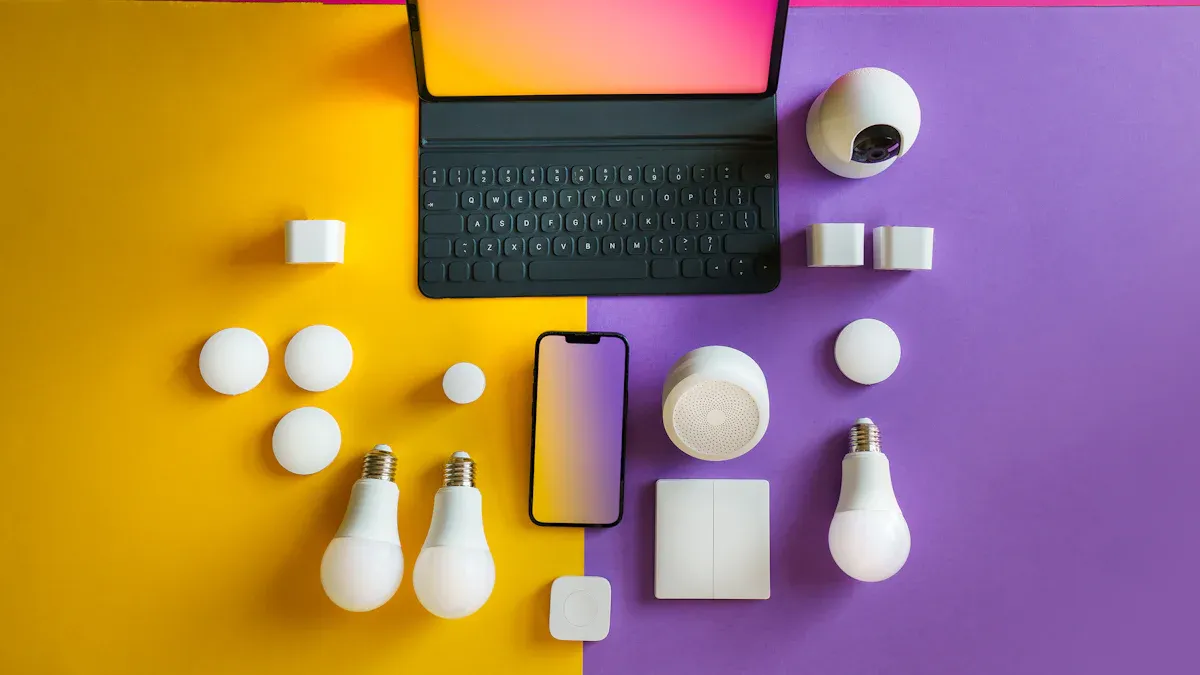
Have you ever wished cleaning could be quicker and less of a hassle? Cordless electric floor mops with water tanks are here to make that dream a reality. These mops are game-changers for cleaning. They’re cordless, so you can move freely without worrying about tangled wires. Plus, they tackle everything from everyday dirt to stubborn stains like dried pasta sauce. With features like an on-demand spray trigger and a built-in water tank, cleaning feels effortless and efficient. Some models even adjust settings automatically based on dirt levels, saving you time and energy. Whether you’re cleaning a small apartment or a large home, tools like the Low Noise Automatic Electric Floor Mop Sweeper Self Cordless Cleaning Vacuum Cleaner with Water Tank Bucket make the job easier and faster.
Key Takeaways
- Cordless floor mops help you clean quickly and easily. They let you move freely without messy cords.
- Charge the mop completely before using it. This helps it work well and keeps the battery lasting longer.
- Pick the correct cleaner for your mop. Use gentle, non-scratching cleaners to keep it safe.
Setting Up Your Low Noise Automatic Electric Floor Mop Sweeper Self Cordless Cleaning Vacuum Cleaner with Water Tank

Unboxing and assembling the mop
When I first unboxed my Low Noise Automatic Electric Floor Mop Sweeper Self Cordless Cleaning Vacuum Cleaner with Water Tank, I was impressed by how neatly everything was packed. Inside the box, you’ll typically find the mop body, handle, water tank, mop pads, and a charger. Start by attaching the handle to the mop body. It clicks into place easily—no tools needed! Next, secure the mop pad to the base. Most models use Velcro or a simple snap-on system, so it’s quick and hassle-free. Once assembled, the mop is ready for the next step.
Tip: Keep the packaging until you’ve tested the mop. It’s handy if you need to return or exchange anything.
Charging the battery for optimal performance
Before using your mop, charge the battery fully. This ensures you get the best performance. Plug the charger into the port on the mop and connect it to a power outlet. A small indicator light usually shows the charging status. For me, it took about 3-4 hours for a full charge. Once the light changes (usually from red to green), you’re good to go.
Note: Avoid overcharging the battery. Unplug it once it’s fully charged to extend its lifespan.
Filling the water tank with water or cleaning solution
Now comes the fun part—filling the water tank. Remove the tank from the mop and open the cap. You can fill it with plain water or a cleaning solution safe for your floors. I prefer using a mild solution for a fresh scent. Be careful not to overfill; most tanks have a max-fill line. Once filled, reattach the tank securely to the mop.
Pro Tip: If you’re using a cleaning solution, dilute it as recommended to avoid residue on your floors.
How to Use a Low Noise Automatic Electric Floor Mop Sweeper Self Cordless Cleaning Vacuum Cleaner with Water Tank
Turning on the mop and selecting the appropriate settings
Using the Low Noise Automatic Electric Floor Mop Sweeper Self Cordless Cleaning Vacuum Cleaner with Water Tank is super simple. Once the battery is charged and the water tank is filled, press the power button to turn it on. Most models, including mine, have a control panel or buttons to adjust settings. I usually start with the standard mode for light cleaning. For tougher messes, like dried pasta sauce, I switch to a higher setting. It’s amazing how the mop adjusts to different cleaning needs. If your model has an on-demand spray trigger, use it to control how much water or solution you apply. This feature is a lifesaver for sticky spots!
Tip: Always test the settings on a small area of your floor to ensure they’re safe for the surface.
Mopping techniques for different floor types
Different floors need different care. Here’s what works best for me:
- Hardwood Floors: Use a mild cleaning solution and avoid soaking the floor. The mop’s gentle cleaning action is perfect for hardwood stairs and everyday dirt.
- Tile Floors: For ceramic or porcelain tiles, I use a steam mop setting if available. It cleans and sanitizes at the same time.
- Laminate Floors: Stick to water or a mild solution. Avoid steam settings, as laminate can be sensitive to heat and moisture.
The versatility of this mop makes it ideal for all these surfaces. I love how it handles everything from caked-on mud to light dust.
Tips for efficient cleaning and covering large areas
When cleaning large spaces, I like to divide the area into sections. This helps me stay organized and ensures I don’t miss any spots. Start from one corner and work your way out. Use the mop’s swivel head to reach tight spaces and under furniture. For stubborn stains, let the mop sit on the spot for a few seconds before moving it. The cordless design makes it easy to move around without worrying about outlets. I’ve found that using the on-demand spray sparingly helps conserve water and cleaning solution.
Pro Tip: Clean the mop pads regularly during use to maintain their effectiveness. Swap them out if they get too dirty.
Maintenance Tips for Your Cordless Electric Floor Mop

Cleaning the water tank and mop head after each use
After every cleaning session, I make it a habit to clean the water tank and mop head. It’s quick and keeps the mop in top shape. First, I detach the water tank and rinse it with warm water. If there’s any residue, I use a soft brush to scrub it gently. For the mop head, I remove it and either rinse it under running water or toss it in the washing machine if it’s machine-washable. Letting both parts air dry completely before reattaching them is key.
Tip: Don’t let water sit in the tank for too long. It can lead to unpleasant odors or even mold.
Proper storage to prevent damage
Storing the mop properly is just as important as cleaning it. I always make sure the mop is turned off and the battery is disconnected if possible. Then, I store it upright in a cool, dry place. Keeping it away from direct sunlight or damp areas helps prevent damage to the battery and other components.
- What I avoid:
- Leaving the mop lying flat on the floor.
- Storing it near heaters or radiators.
Pro Tip: Use a wall mount or a designated stand if your model comes with one. It saves space and keeps the mop secure.
Regular inspections for wear and tear
Every few weeks, I take a closer look at my mop. I check the mop pads for fraying and replace them if needed. I also inspect the water tank for cracks and the battery for any signs of swelling. Catching these issues early can save you from bigger problems later.
Reminder: If you notice anything unusual, like reduced performance or strange noises, consult the user manual or contact customer support.
Keeping up with these simple maintenance steps ensures your mop stays efficient and lasts longer.
Post time: Feb-24-2025